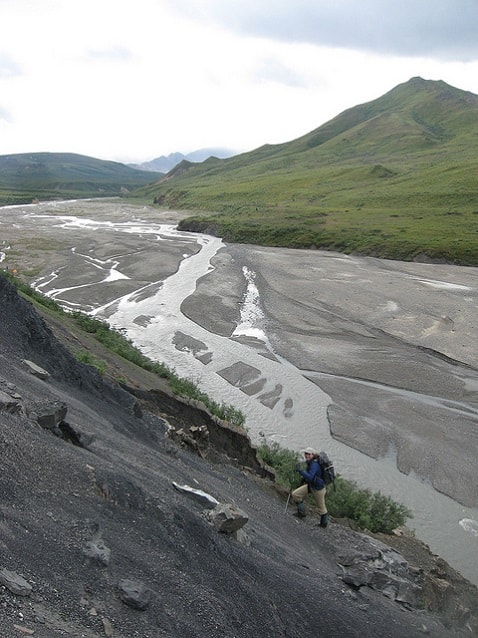 Thanks to Som sai for this link of interest.. I do think that environmental justice or even plain old social justice has been somewhat overlooked with regard to many issues. We need to think about it with regard to all the issues we face. It seems to me that it’s like so many things in our world… there’s an abstraction.. biodiversity, climate change, environmental justice, social justice; but for some reason our thinking about them gets channelized (a thinking ditch) when if we arrayed all the choices, they would be more like a braided stream, multi-threaded and dynamic.
Thanks to Som sai for this link of interest.. I do think that environmental justice or even plain old social justice has been somewhat overlooked with regard to many issues. We need to think about it with regard to all the issues we face. It seems to me that it’s like so many things in our world… there’s an abstraction.. biodiversity, climate change, environmental justice, social justice; but for some reason our thinking about them gets channelized (a thinking ditch) when if we arrayed all the choices, they would be more like a braided stream, multi-threaded and dynamic.
What unique challenges do large carnivore reintroductions pose that environmental justice can help address?
Large carnivores are a unique set of species for a lot of different reasons. They are involved in just about every kind of human-animal conflict you can imagine, so we thought they were a challenging but important place to start. Some of these challenges: People who make decisions about carnivore reintroductions sometimes don’t live near the places where the recovery efforts — and potential related animal-human conflicts — are occurring. Large carnivores themselves are wide-ranging and highly mobile. One animal’s erratic behavior can impact people’s view of the entire species. So, the challenges and the opportunities go hand in hand, and that makes this difficult, but also important, to tackle.
In the paper, you describe four components of environmental justice that are important to consider in conservation projects. Can you explain those in the context of large carnivore reintroductions?
- Distribution considers who is actually being harmed materially and who is benefiting
- Participation asks who has a seat at the decision-making table
- Recognition asks whose worldview is being recognized in the terms of the debate or in the discussion itself
- And finally, affective (or emotional) justice considers how we appropriately account for people’s emotions — fear, anger, happiness, for example — toward the reintroduction of certain species
On this last point: On one hand, we should take emotions really seriously — fear can be life-changing and is very important to understand as a harm in and of itself. And at the same time, emotions can be difficult to estimate, and they can reorient power dynamics. In the case of large carnivores, we’ve often seen people who are not vulnerable or marginalized use emotions like fear to make themselves into victims. They wind up having an even bigger voice in the decision-making process than they might have had before.
So how can we use this environmental justice framework going forward in these reintroduction efforts?
Through a justice lens, we can ask questions about who is making decisions, and whether they are people who are in power, or people who are already marginalized. We can try to measure the ways in which material harm has been inflicted on different groups of people, or the ways in which impacts are unequally distributed. Social science, or humanistic, considerations tell us a bit about the bigger picture: What are the worldviews involved, how might those limit or enable discussions that weren’t possible before, and how are people’s emotional experiences shaping these conversations and the possible outcomes?
The reintroduction of wolves to Yellowstone National Park happened in 1995 and has been hugely divisive ever since. People have spent millions of dollars trying to address the problems that arose. But, in fact, it might be that a different kind of framing — one around justice — could offer an important new step toward addressing these problems.
This isn’t something folks love to hear, but I think the truth is, if you expect a framework like this to give you a single, perfect answer to solve problems, you’re setting yourself up for failure. Large carnivore reintroductions include a complicated and challenging set of circumstances, so having a process in place is really important, especially one that’s informed by a good understanding of justice.
What’s next with this work?
Our goal is to walk through this framework using a possible California grizzly bear reintroduction as a case study to lay out what it would actually look like to do this while thinking about environmental justice from the very beginning.
Another option would be to study the Colorado reintroduction of wolves. Certainly it started not very well from an ej (environmental justice) .. decision made by a state-wide initiative vote and won by Coloradans who don’t live in the country of reintroduction. Arguably it would be interesting to begin to consider ej at this point.